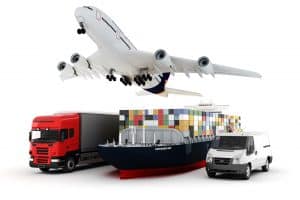
The Smart Container project aims to boost the digital transformation of the transportation and logistics industry, fueling innovation in applications and services.
Supply chain stakeholders need to share significant volumes of data from many different sources to be able to do their daily business. This data must be integrated and fed directly into the business processes designed by the stakeholders. To enhance international trade and to take advantage of growing volumes of data, automation is needed.
At the same time, application development paradigms are shifting from a traditional style, where applications are developed standalone from scratch, to approaches where applications become services used as add-ons to primary programs. The ability to plug and play different services and data sources is key to ensure agile, cost-efficient development and continuous adaptation of composite services.
See also: How Real-Time Data is Automating the Temperature-Controlled Supply Chain
To address these issues, many organizations develop applications and services based on a service-oriented architecture (SOA), which promotes sharing and reusing software components. Software applications are built by composing loosely coupled services—residing in the network and accessible via standard protocols—into larger composite services, or applications.
The adoption of an SOA often accelerates application development by an order of magnitude compared to the development time in present long-established, tightly coupled, monolithic environments. In addition, the use of an SOA approach enables new business processes to be implemented quickly from existing services and allows those implementations to be adjusted rapidly to meet changing requirements.
Underlying Technology Key to SOA’s Benefits
The SOA approach is technology-agnostic. Application designers can implement SOA using a wide range of technologies, including Representational State Transfer (REST) and Web Service (WS) standards, which were developed by the Organization for the Advancement of Structured Information Standards (OASIS) and the World Wide Web Consortium (W3C).
SOA also can be implemented utilizing Remote Procedure Call (RPC), Distributed Component Object Model (DCOM), Common Object Request Broker Architecture (CORBA), Web Services, or Windows Communication Foundation (WCF).
Organizations can also use a file-system mechanism to communicate data conforming to a defined interface specification between processes conforming to the SOA concept. The key is having independent services with defined APIs that can be called to perform their tasks in a standard way. The service does not need to know the calling application, and the application does not need to know how the service performs its tasks.
The Role of APIs
SOA services communicate using common application programming interfaces (APIs). APIs should be architected with SOA support in mind, such as JavaScript Object Notation (JSON), REST, or Simple Object Access Protocol (SOAP), although they can be created in any chosen syntax (such as Web Services) based on standard data exchange structures (master data exchange structure).
A prime benefit of adopting an SOA is that services can be shared and reused. Service providers publish descriptions of their services in registries. Once registries are available, service consumers can then query these registries to discover the available published services. They can then choose, invoke, and even compose services to meet their business process needs. Once invoked, the service will perform its functions and send a response.
To invoke a service or services, consumers need the API description(s). Neutral service providers may collect, monitor, and manage Smart Container data. Service providers also have the responsibility to expose Smart Container APIs that could be used by all stakeholders who have the right to access the data.
In the case of proprietary rather than standardized API development, consumers are generally restricted to one solution provider. However, if we agree on API specifications standards, service(s) consumers have the option to select their desired service provider and to quickly and easily change to another provider.
Why Standards are Important
With the ramp-up of new and emerging technologies, standards are more necessary than ever. The risks of not developing or not following standards include:
- Proprietary technologies with significant deployment limitations
- Lack of interoperability among systems and devices
- Prohibiting international validation of technology deployment
- Costly and time-consuming integration
- Risk of vendor lock-in
Global multimodal standards for Smart Containers will accelerate the usage and adoption of smart containers, enabling stakeholders to integrate their use with risk management analysis of cross-border authorities, such as customs.
For example, the “Smart Container Business Requirements Specification” ensures that the ecosystem shares a common understanding of Smart Container benefits and possible use cases. Defining the data elements that smart containers can generate will accelerate the integration and use of Smart Container data on different platforms. In addition, using standard Smart Container data enables open communications channels between supply chain actors.
Service APIs are key to ensuring simplification and acceleration of the integration of digital services from various sources. Data sharing is particularly important in the logistic supply chain due to the large numbers of diverse players and the fact that container movements are global. Easy access to information for all relevant stakeholders enables situational awareness and empowers data-driven risk analysis and decision-making. Smart Container data and predictive services enable supply chain efficiency and improve collaboration between all stakeholders.
In addition to UN/CEFACT, there are other trade-related Standards Development Organizations (SDOs), including:
- Ship-planning Message Development Group (SMDG): Works with UN/CEFACT Transport & Logistics Domain to define Electronic Data Interchange (EDI) messages and will soon initiate work on APIs
- Digital Container Shipping Association (DCSA): Focuses on driving standardization, digitalization, and interoperability in container shipping to unify the ocean shipping industry and to “create value and to quickly overcome the pain points in the industry.”
- International Air Transport Association (IATA): Focuses on the creation of global standards for airline safety, security, efficiency, and sustainability.
- GS1: Focuses on providing a common language that ensures key processes run smoothly in several industries, including maritime.
- International Organization for Standardization (ISO): An international standard-setting body composed of representatives from various national standards organizations, namely the ISO/TC 104 freight containers committee and ISO/TC 204 Intelligent Transport Systems (ITS)/General fleet management and commercial/freight working groups.
UN/CEFACT: Its Role and Framework
UN/CEFACT is a subsidiary intergovernmental body of the United Nations Economic Commission for Europe (UNECE) and a global standardization organization. UN/CEFACT’s mission is to improve the ability of business, trade, and administrative organizations from developed, developing, and transitional economies to exchange products and relevant services effectively. Its principal focus is on facilitating national and international transactions through the simplification and harmonization of processes, procedures, and information flows.
UN/CEFACT experts have decades of experience in developing global standards. Their continually increasing Core Components Library (CCL) is a comprehensive catalog of data elements interrelated by business context, which covers buying, shipping, and payment processes. CCL is a cornerstone of the smart container project. The best-known standards are UN/EDIFACT EDI message standards used by organizations globally.
Currently, various trade organizations are working on trade-related standards based on their organization-specific data models. Some are governmental organizations open only to government representatives and nonprofit organizations. Examples are the World Customs Organization (WCO) and the International Marine Organization (IMO). These two organizations have their own data models. However, efforts are ongoing to ensure that semantics for their data elements are consistent with UN/CEFACT CCL and that their data models are consistent with UN/CEFACT reference data models.
Focus on Smart Containers
The UN/CEFACT Transport & Logistics domain, a subgroup of the UN/CEFACT, started a Smart Container project in 2018. Its aim is to promote smart containers and define the data elements generated by smart containers to allow smart containers to be integrated into different industry processes.
The Smart Container project aims to create a state-of-the-art solution in providing and exposing services that can be orchestrated and enriched to meet the business process needs of any intermodal ecosystem stakeholder. The availability and exposition of these services can boost the digital transformation of the transportation and logistics industry, fueling innovation in applications and services.



























